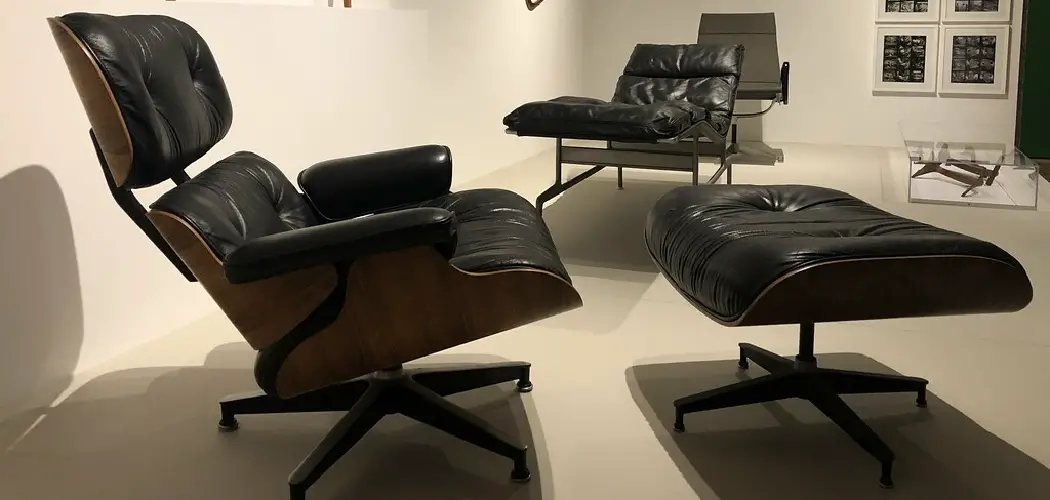Do you have a rolling chair that you love but it’s just not quite stable enough for your needs? If so, don’t worry, there is a way to make it stationary!
In today’s post, we’re going to show you how to make a rolling chair stationary. With a few simple steps, you can turn your favorite rolling chair into a piece of furniture that is perfect for your home office or workspace. So, let’s get started!
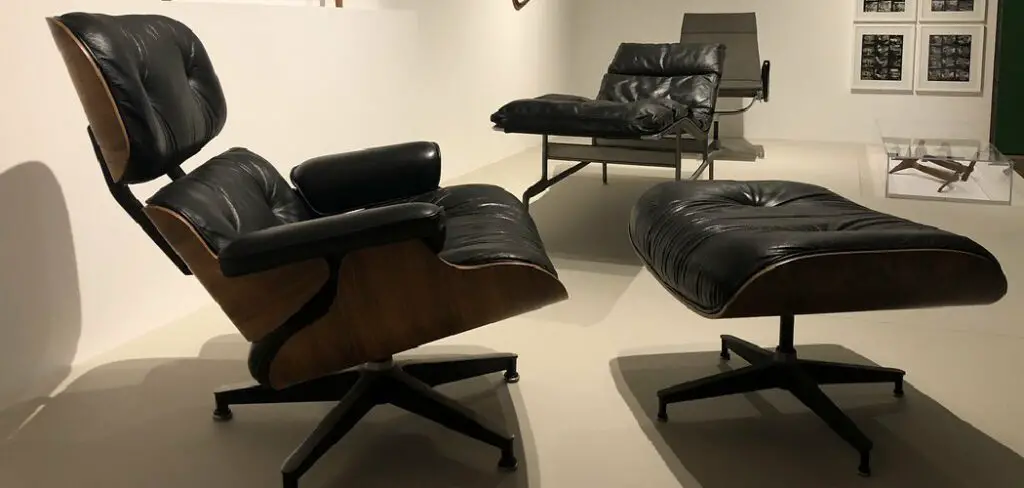
Chairs are one of the most commonly used pieces of furniture in any home. They can be used for sitting in, as a makeshift table, or as a step stool. However, when they’re not needed, they tend to take up a lot of space.
This can be a problem if you don’t have much room to spare. Luckily, there’s an easy way to make your chairs stationery without having to drill any holes into the walls or use any adhesive tape. Check out this guide to learn how!
Why is it Important to Make a Rolling Chair Stationary?
1. Provide Stability
A stationary chair will prevent the chair from rolling or moving, providing a stable seating experience. So if you want stability at your desk, it’s important to make sure your chair is stationary.
2. Avoid Injury
In addition to providing stability, a stationary chair can also help prevent injuries. Rolling chairs have the potential to roll out from under someone or cause them to trip and fall. Making the chair stationary eliminates this risk.
3. Maintain Floor Surface
Making a rolling chair stationary also helps maintain the surface of your floor. Constant rolling can cause scuff marks or damage to flooring, and making the chair stationary will prevent this from happening.
4. Provide Safety
In certain situations, a stationary chair may be required for safety reasons. This can include workplaces with heavy machinery or other potential hazards where a rolling chair could put someone at risk.

Things You Will Need to Make a Rolling Chair Stationary
- caster wheels with locking mechanism
- screwdriver or wrench (depending on type of caster wheel)
- chair glides
How to Make a Rolling Chair Stationary in 5 Steps
Step 1: Measure the Diameter
Measure the diameter of the wheel at its widest point, and refer to this measurement when purchasing a chair glide or caster wheel stopper. You have to be careful to match the diameter of the stopper with the wheel or it won’t work properly.
Step 2: Purchase Stopper
Purchase a stopper that fits the diameter of your wheel from a hardware or office supply store. Make sure to check for compatibility with your type of flooring, as some stoppers may not be suitable for certain surfaces.
You Can Check It Out Dress Up Folding Chairs
Step 3: Install the Stopper
Follow the instructions for installation for your specific stopper. This may involve drilling into the chair base or simply pressing the stopper onto the wheel. Be careful not to overtighten or damage the wheel or chair base.
Step 4: Test Stability
Test out the stability of your chair with the stopper in place. Adjust as necessary by re-installing the stopper at a different angle or position. If you find that the stopper is not providing enough stability, you may need to purchase a larger or heavier-duty stopper.
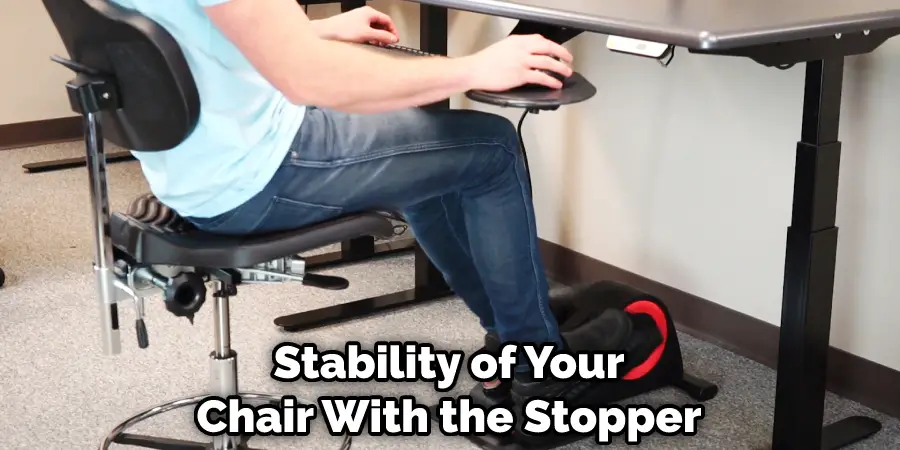
Step 5: Check it Out
Sit in your now stationary chair and enjoy the added stability for improved posture and comfort. Make sure to regularly check that the stopper is still securely in place. Consider purchasing additional stoppers for all of your rolling chairs to create a more ergonomic workspace.
Things You Should Keep in Mind Before Making a Rolling Chair Stationary
1. Choose Good Brakes
Make sure to choose brakes that can handle the weight of the chair and will stay securely in place. Otherwise, the chair may roll unexpectedly and cause injury.
2. Test Out the Brakes
Before relying on the brakes to keep the chair stationary, test them out by sitting in the chair and trying to roll it back and forth. If it still rolls, adjust the brakes or choose a different set.
3. Have a Backup Plan
Even with good brakes, there is always a chance that the chair may still roll. Have a backup plan in place, such as placing the chair against a wall or using a rug gripper under the wheels.
4. Regularly Check and Adjust Brakes
Over time, the brakes may loosen or wear down. Make sure to regularly check and adjust them as needed to ensure the chair remains stationary.
5. Check the Flooring
Before installing the brakes, check that your flooring can handle them without damage. You have to be careful with certain types of flooring, such as hardwood or laminate. Installing protective pads under the brakes can help prevent damage to the floor.
6. Use Caution When Standing
Even with brakes in place, it is important to use caution when standing up from the chair. Make sure to grip the arms of the chair and push down on them as you stand to prevent the chair from rolling.
7. Adjust Height
Make sure to adjust the height of your chair so it is comfortable for sitting and using at a desk or table. A chair that is too low or too high can cause strain on your body and make it harder to work efficiently.
8. Keep the Weight Limit in Mind
Be aware of the weight limit for your chair, as exceeding it may cause damage to the brakes and potentially lead to injury. Look for chairs with higher weight limits if necessary.
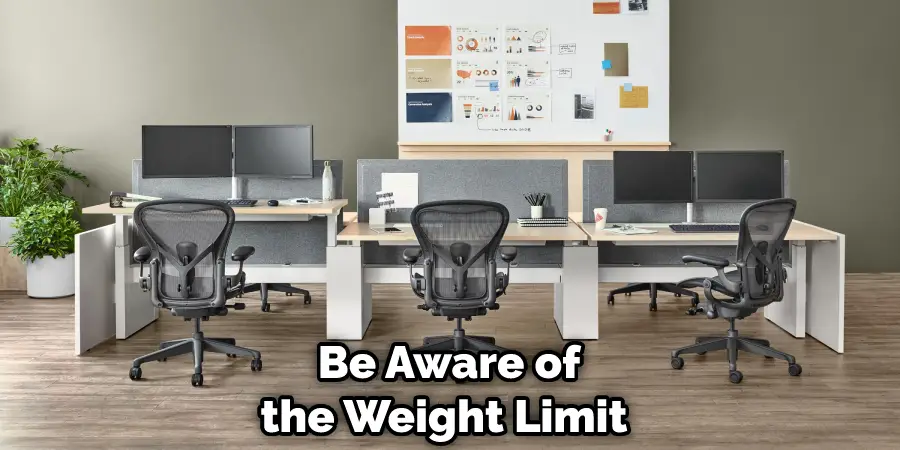
9. Choose a Comfortable Chair
In addition to making sure your chair is stationary, it is important to choose one that is comfortable and offers proper support. Consider factors such as the material of the seat and back, armrests, and adjustability options.
10. Regularly Clean Brakes
To maintain their effectiveness, periodically clean the brakes off any dirt or debris that may have accumulated. This will also ensure the chair remains stationary and stable.
By following these tips, you can make sure your rolling chair is safely and securely stationary while also being comfortable for daily use.
Frequently Asked Questions
Can I Make a Swivel Chair Stationary?
Yes, there are several ways to make a swivel chair stationary. One option is to use a chairmat with non-rolling edges. Another solution is to replace the swivel mechanism with a stationary base or attach caster locks to prevent rolling. Lastly, you can also add weight to the base of the chair for added stability.
Why Does My Swivel Chair Keep Spinning?
There could be several reasons for a swivel chair to spin. It may need lubrication or tightening of the swivel mechanism. The floor surface may also affect the smoothness of spinning, so using a chairmat can help. Additionally, check the weight distribution on the chair to ensure it is balanced and not causing it to spin.
How Do You Loosen a Swivel Chair?
If a swivel chair is too tight or difficult to move, it may just need lubrication. Apply lubricant to the swivel mechanism and allow it to soak before trying to move the chair again. If the issue persists, it may be necessary to tighten or replace parts of the swivel mechanism. It is important to make sure the chair is securely tightened before using it to avoid any accidents.
Can a Swivel Chair Tip Over?
While swivel chairs are designed to be stable, they can tip over if not used properly. It is important to make sure the chair is adjusted to the appropriate height for the user and that the weight is evenly distributed. Additionally, avoid leaning or standing on the chair as it can cause instability and potentially lead to tipping over.
You Can Check It Out Wrap a Gaming Chair
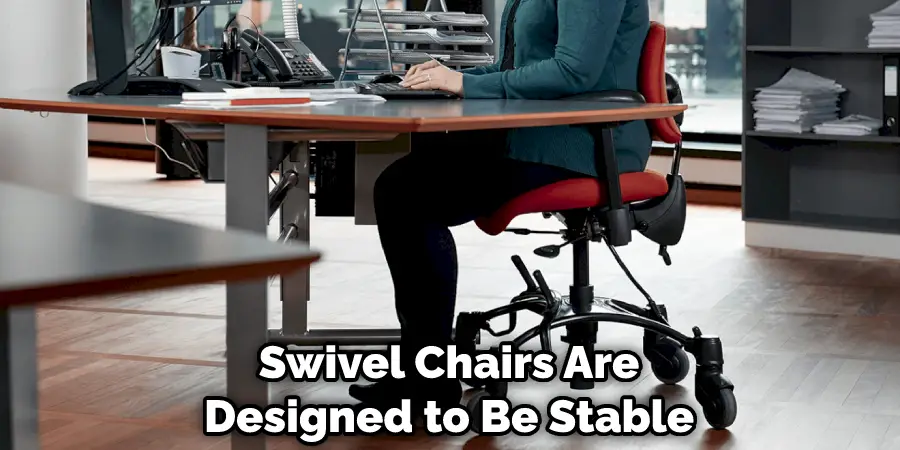
Conclusion
Now that you know how to make a rolling chair stationary, there are a few things you can do to keep it in place. First, make sure the wheels are clean and free of debris. Second, adjust the tension so the chair doesn’t roll too easily.
And finally, if necessary, use a heavy object to weigh down the chair. By following these simple tips, you can ensure that your rolling office chair stays put where you need it.
Even if your rolling chair is new, it’s still important to be proactive about making sure it doesn’t roll away when you don’t want it to. By following these steps, you can make sure your chair stays in place and doesn’t become a safety hazard. Do you have any other tips for making a rolling chair stationary? Share them with us in the comments below!

